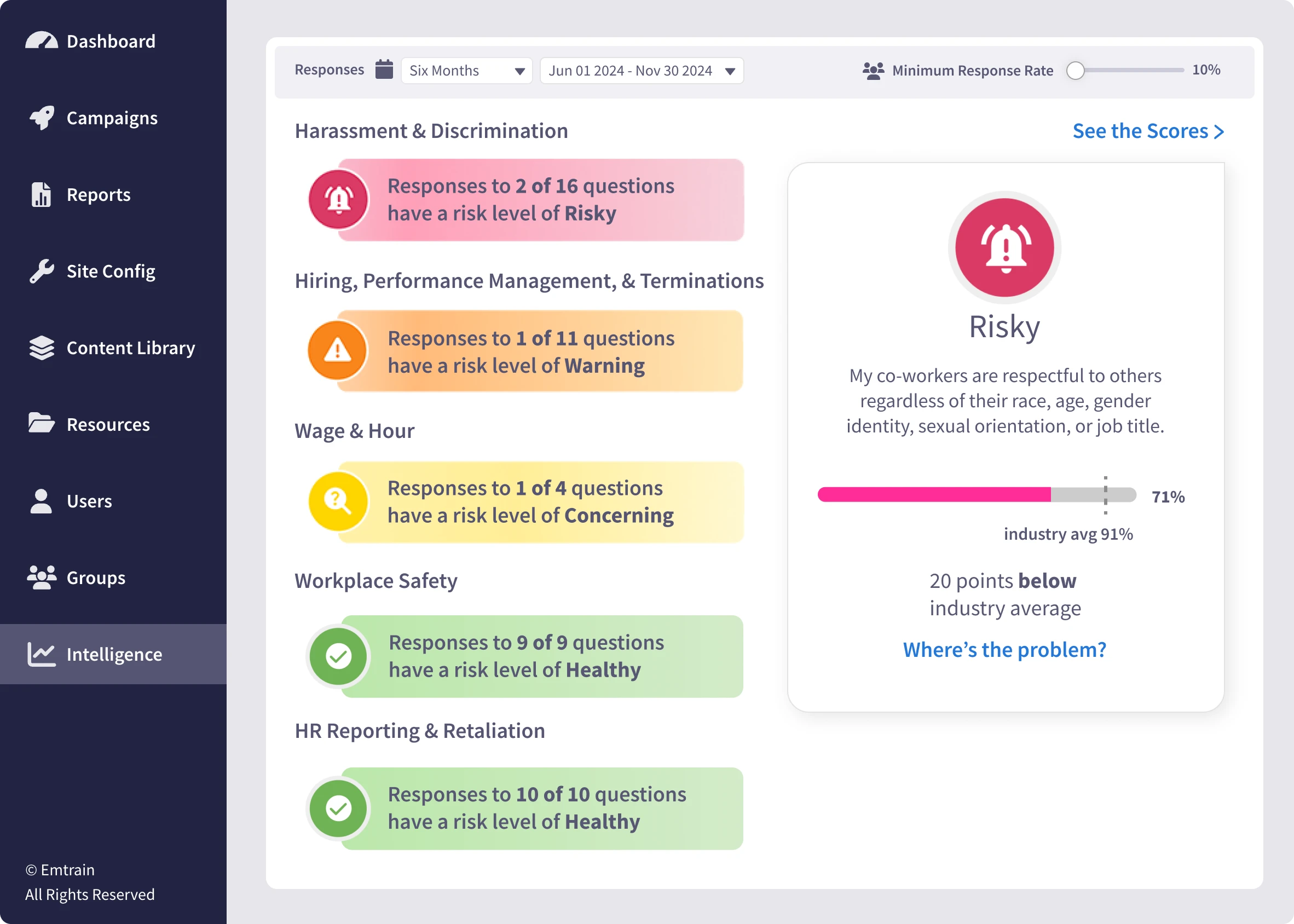Home » Concepts » Manager Basics » Active listening
Active listening is the practice of fully focusing on, understanding, and responding to a speaker with empathy and attention. Unlike passive listening, where someone hears words without engaging, active listening requires conscious effort, patience, and responsiveness to ensure the speaker feels heard and understood. This skill fosters stronger relationships, minimizes misunderstandings, and promotes a more inclusive and collaborative work environment.
Emtrain’s harassment training course is engaging, interactive, and designed to spot and reduce EEO risk.

The concept of active listening originated in the mid-20th century with psychologist Carl Rogers, who emphasized the importance of empathetic listening in therapy. Rogers believed that true understanding and communication could only be achieved when the listener fully engaged with the speaker’s thoughts and emotions without judgment. His ideas later influenced leadership training, workplace communication strategies, and conflict resolution methods across industries.
In today’s fast-paced workplace, employees bring diverse communication styles. Some excel in vocal, dynamic discussions, while others prefer a more reflective approach. This diversity can sometimes create communication gaps, particularly between managers and employees who interpret engagement differently.
A key takeaway from Bridging the Communication Gap: A Tale of Effective Communication for Managers is that active listening plays a crucial role in fostering effective workplace communication. Here’s how:
A manager values open dialogue but notices an employee remains silent during team meetings. Assuming this means disengagement, the manager becomes frustrated, thinking the employee lacks initiative or input. However, the employee’s reserved nature means they take time to process ideas before speaking, unintentionally leading to misunderstandings.
Recognizing the need for inclusivity, the manager adjusts their approach to encourage participation. Instead of expecting immediate verbal responses, the manager pays attention to nonverbal cues, such as body language and eye contact, to identify when the employee is engaged. They also create space for alternative forms of contribution, such as follow-up emails or one-on-one check-ins.
As the manager fine-tunes their active listening skills, the employee gradually becomes more comfortable speaking up. By fostering **an environment where all voices feel valued—whether outspoken or reserved—**the manager unlocks new insights and contributions that strengthen team collaboration.